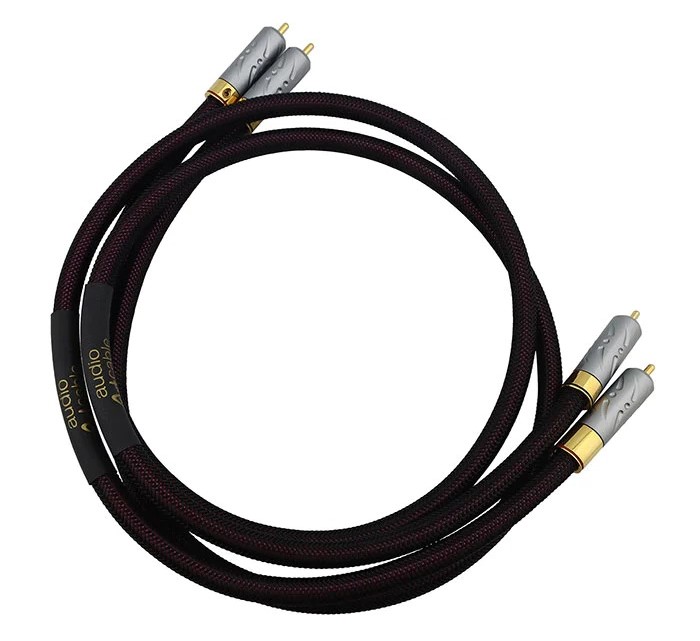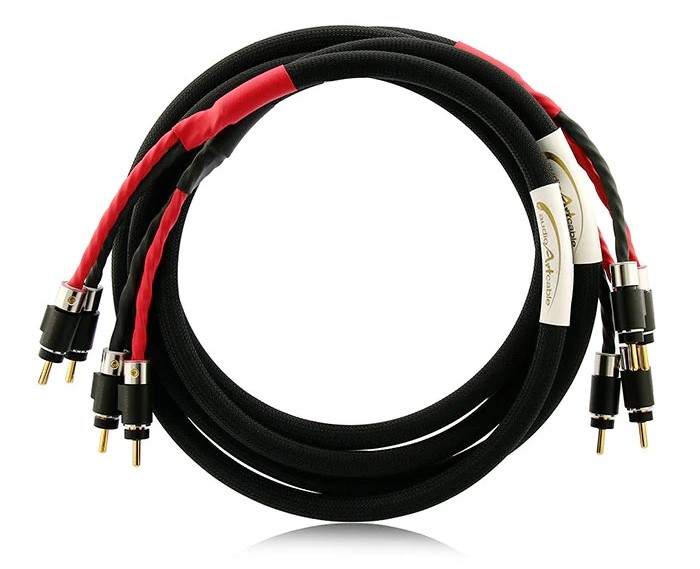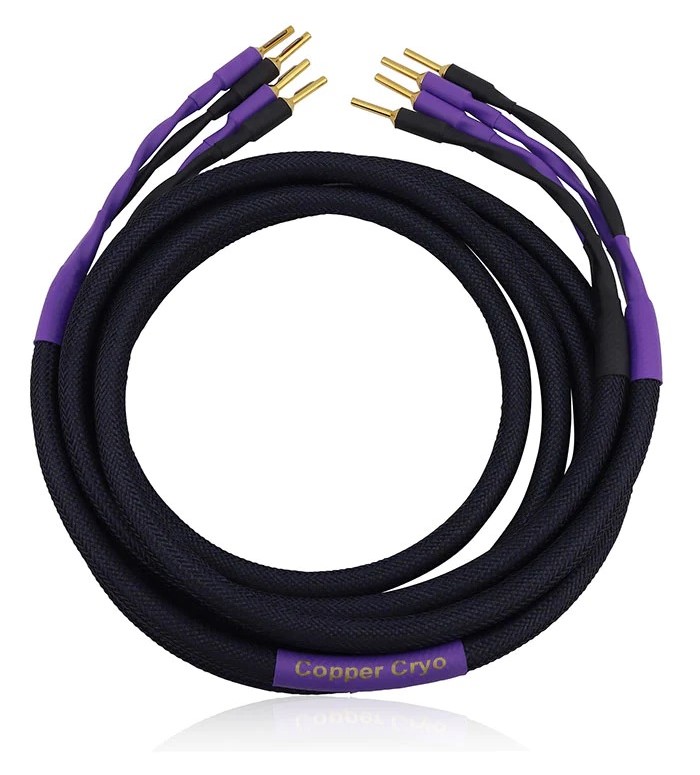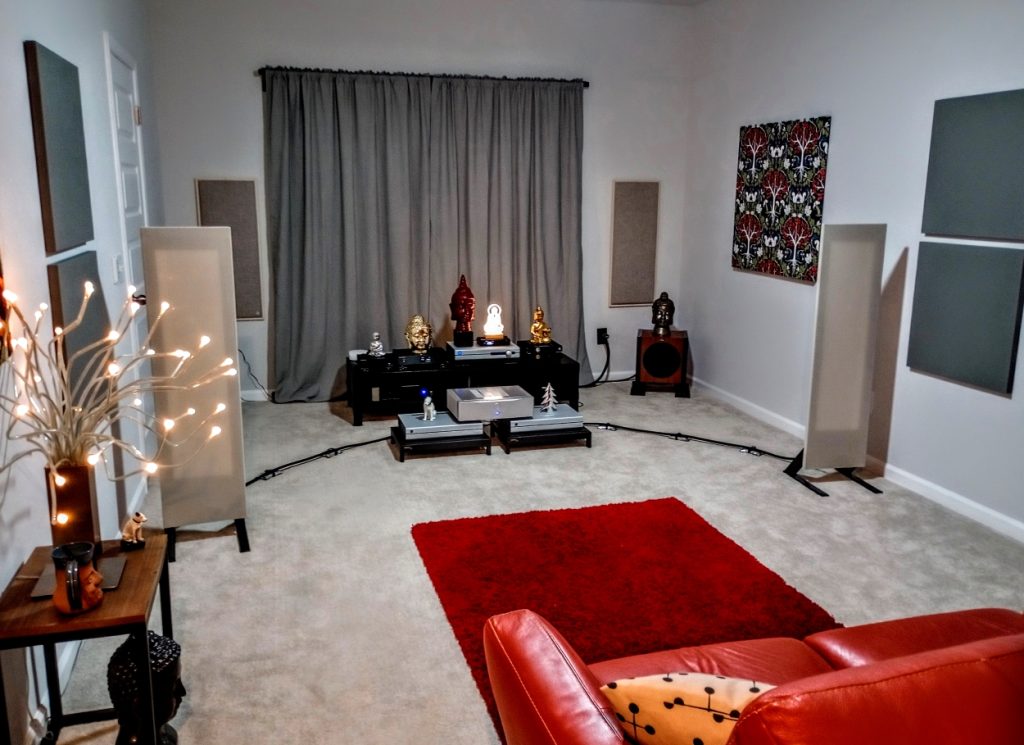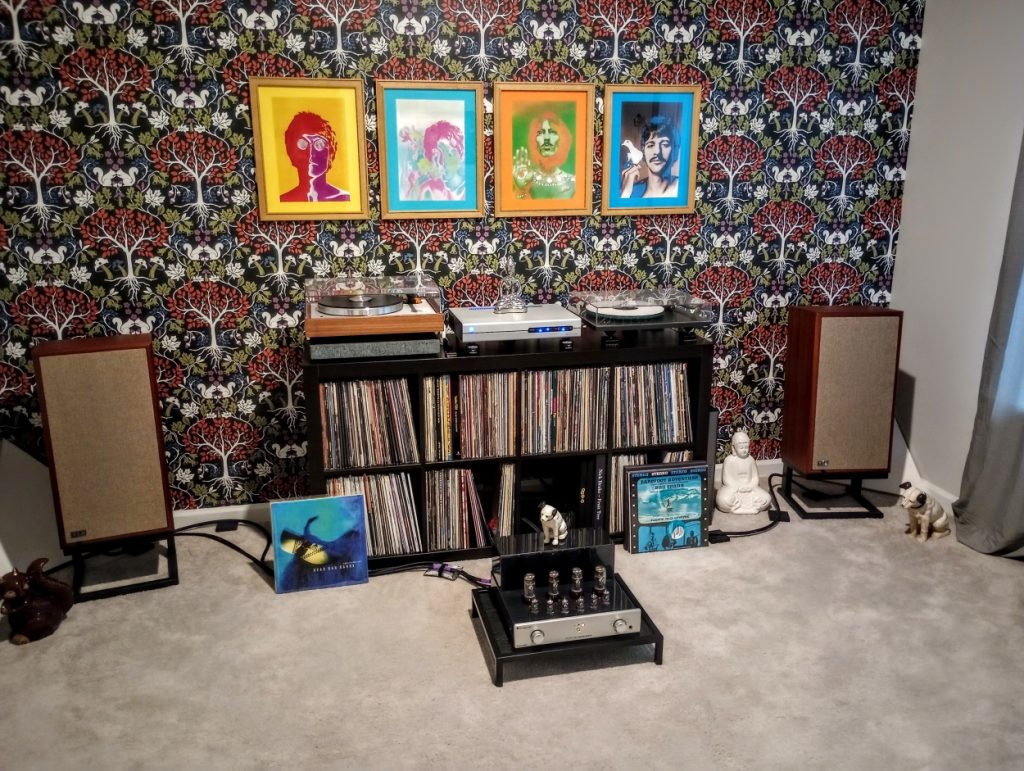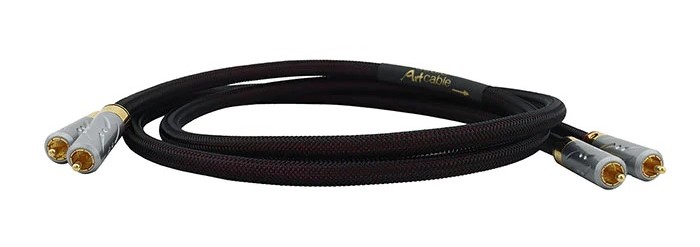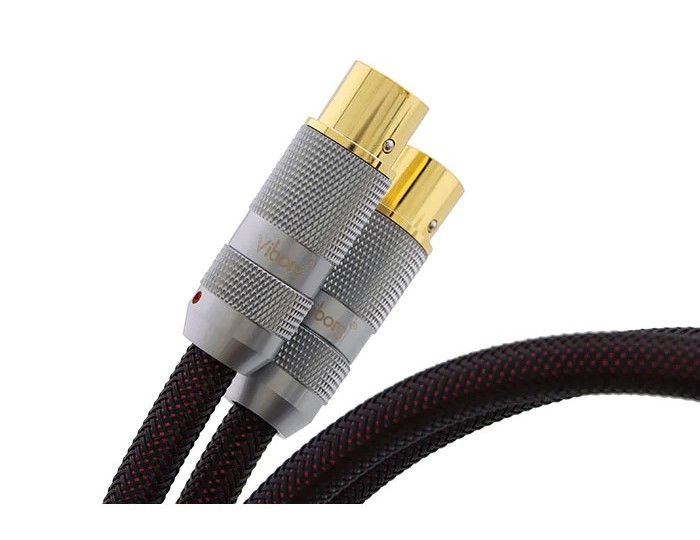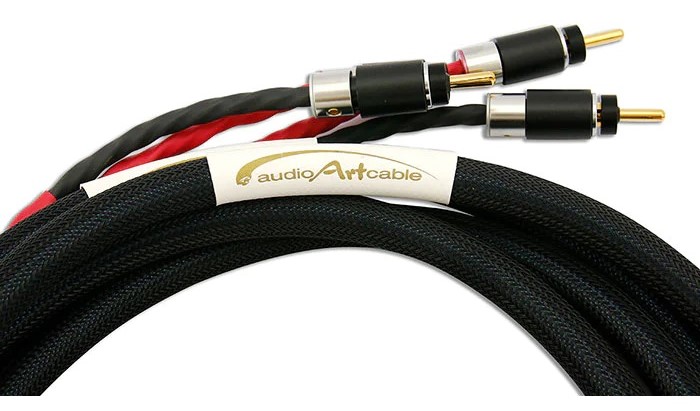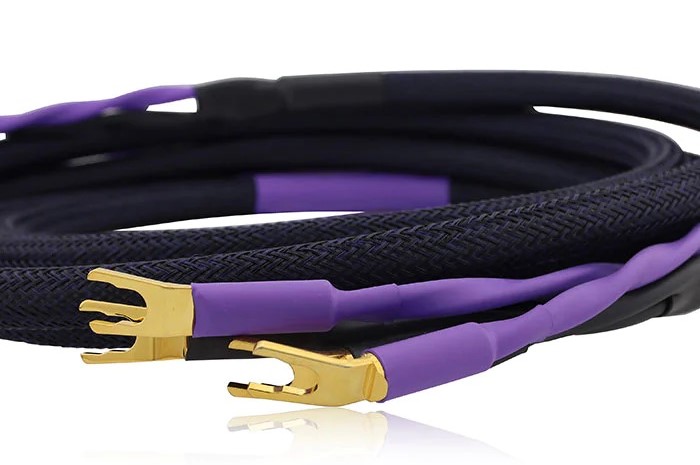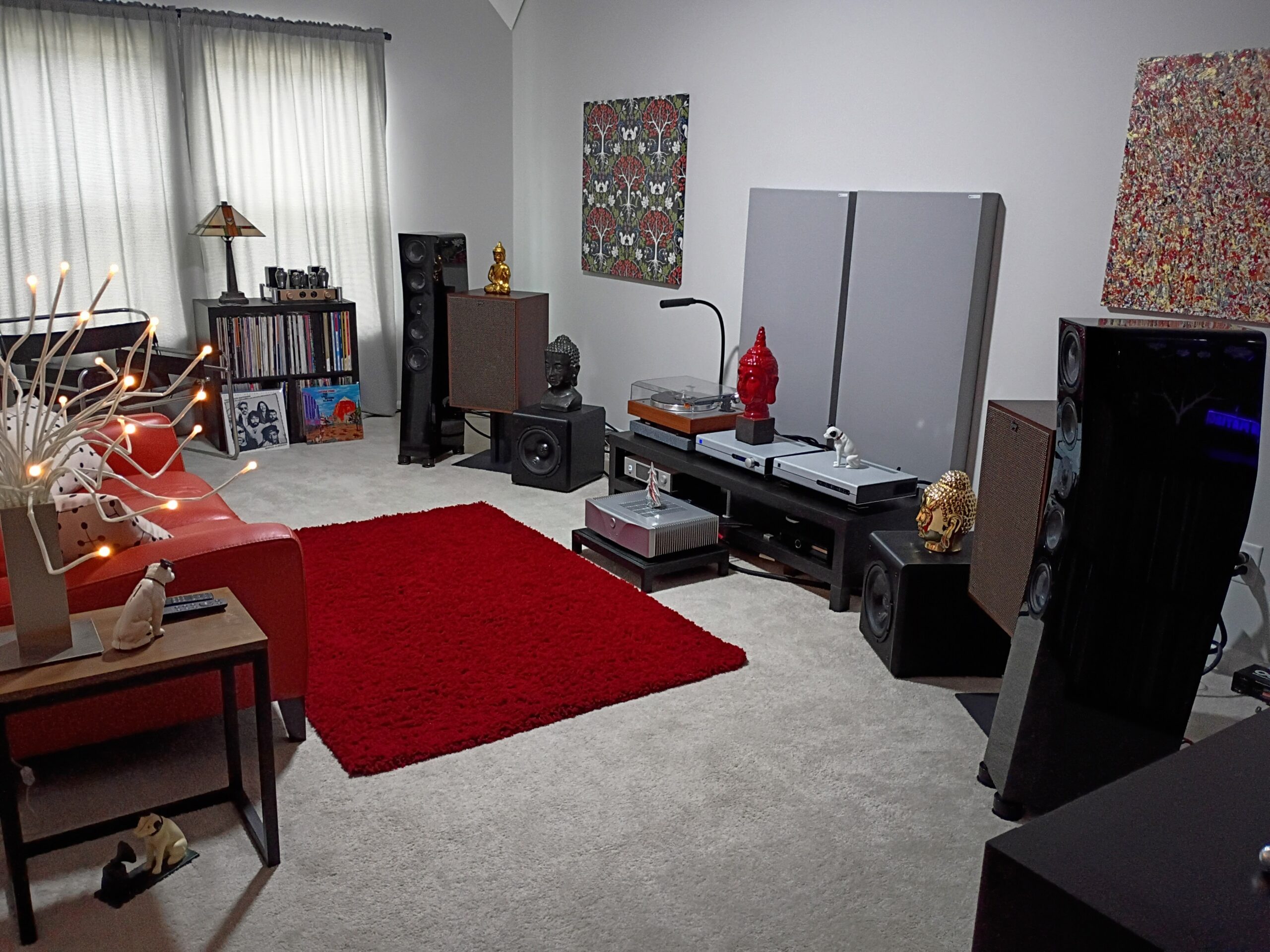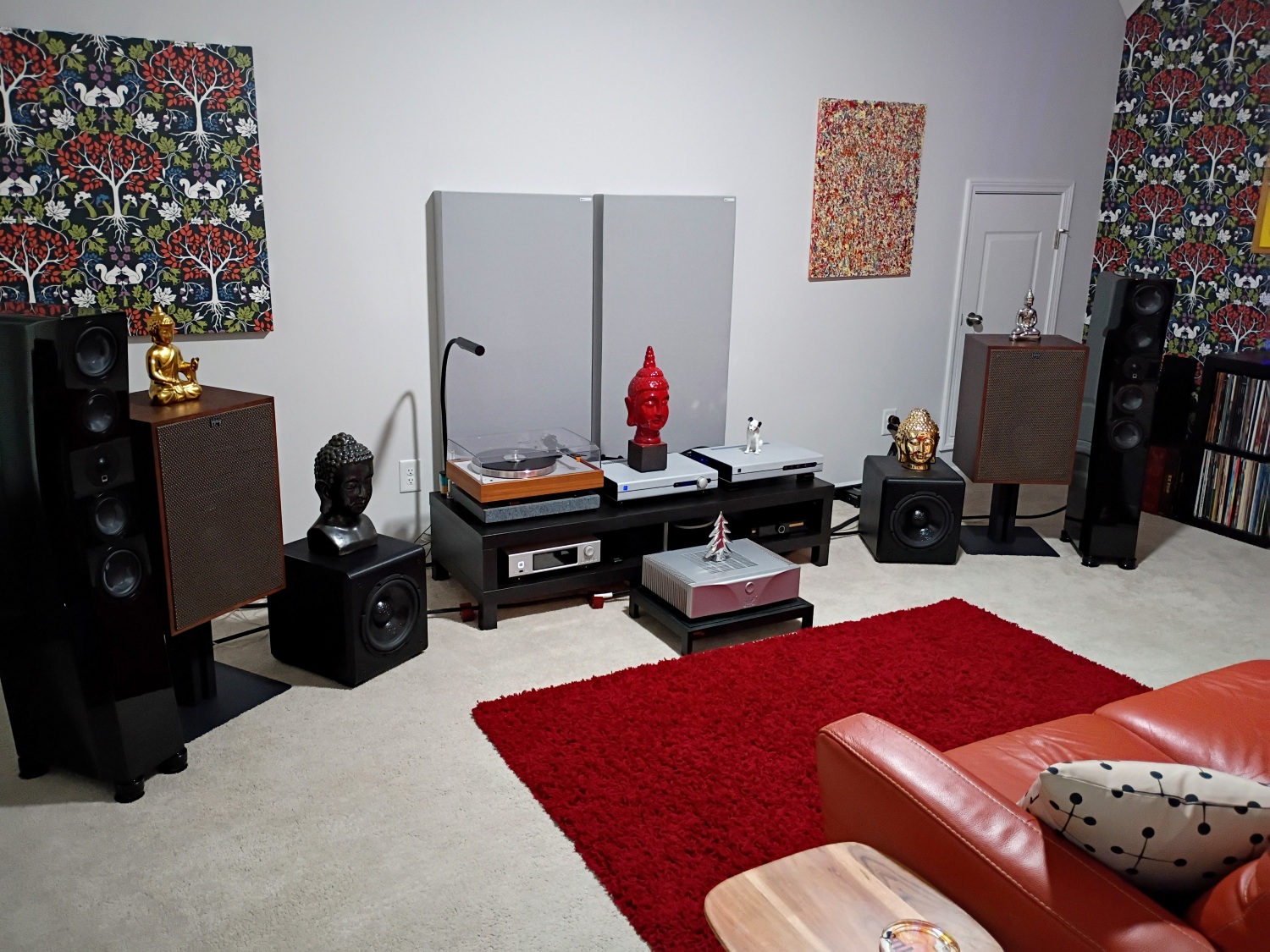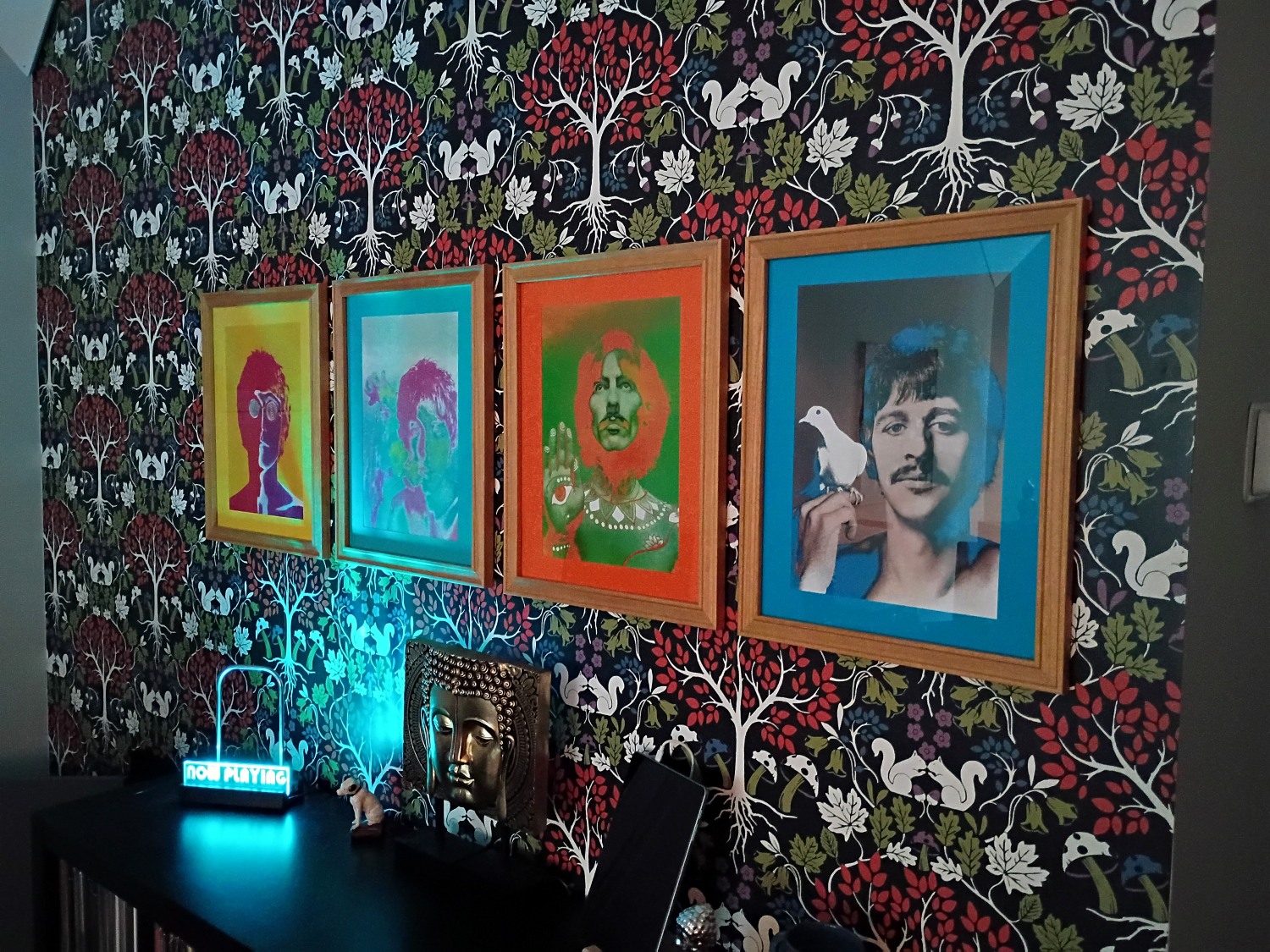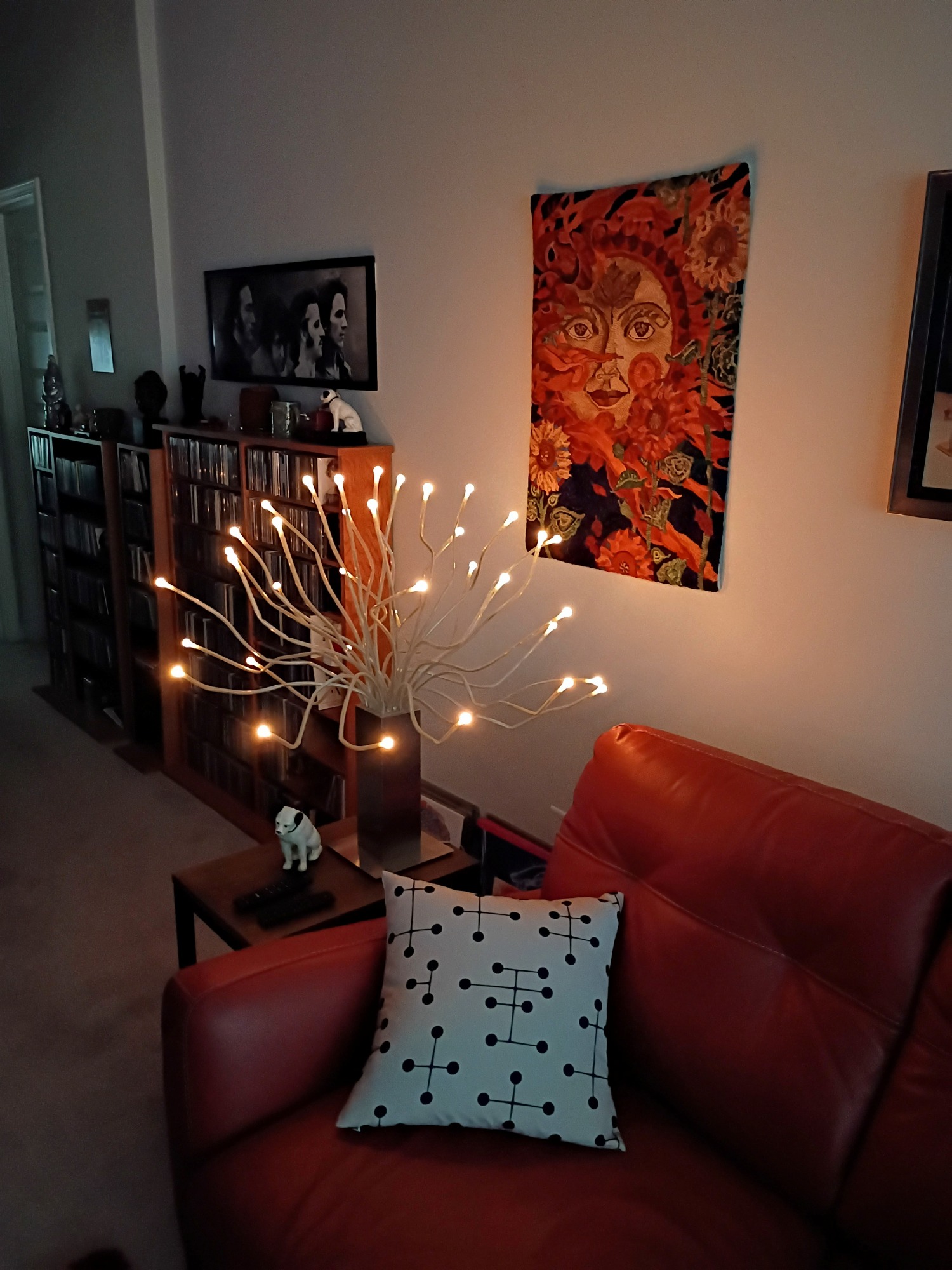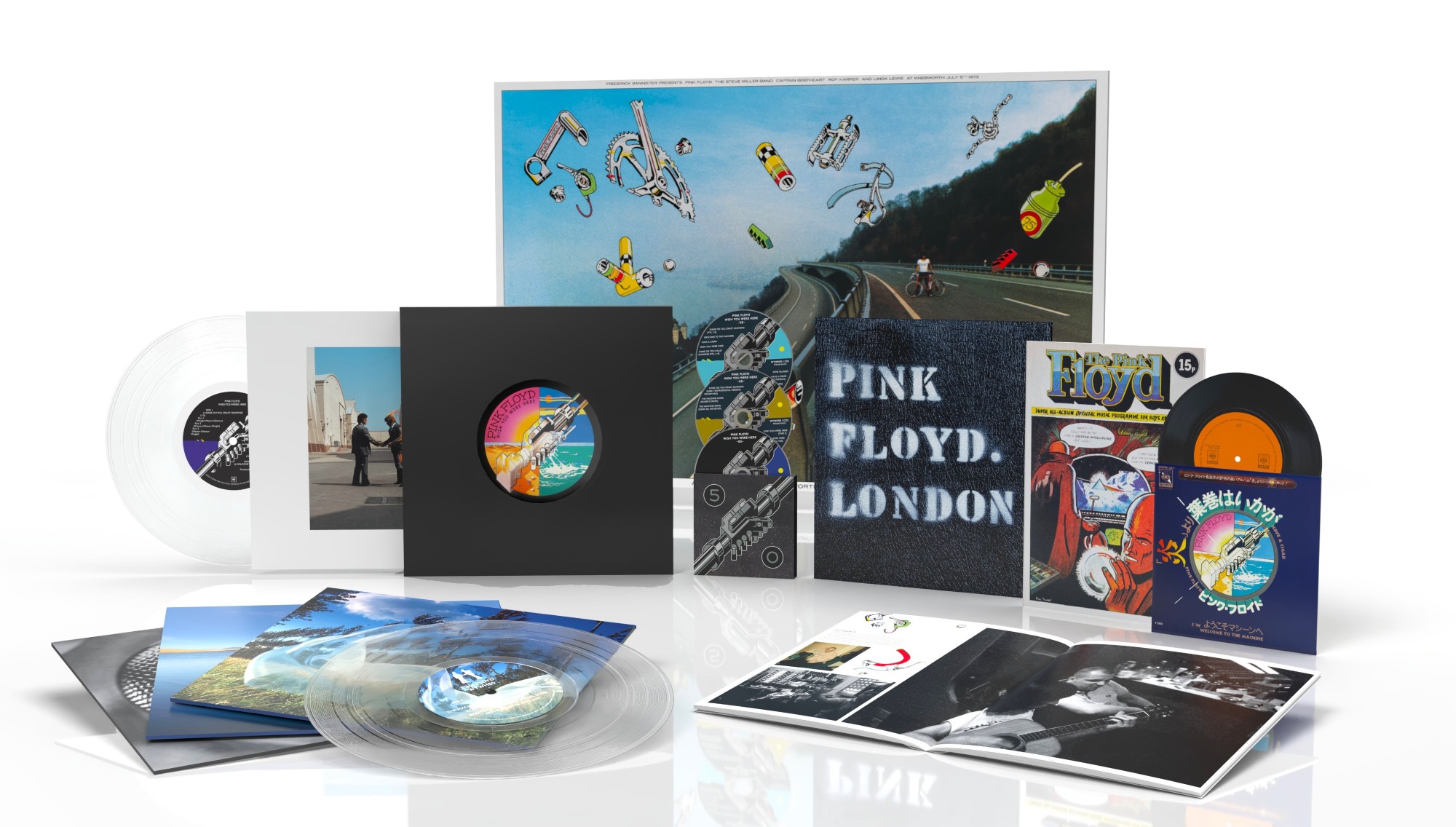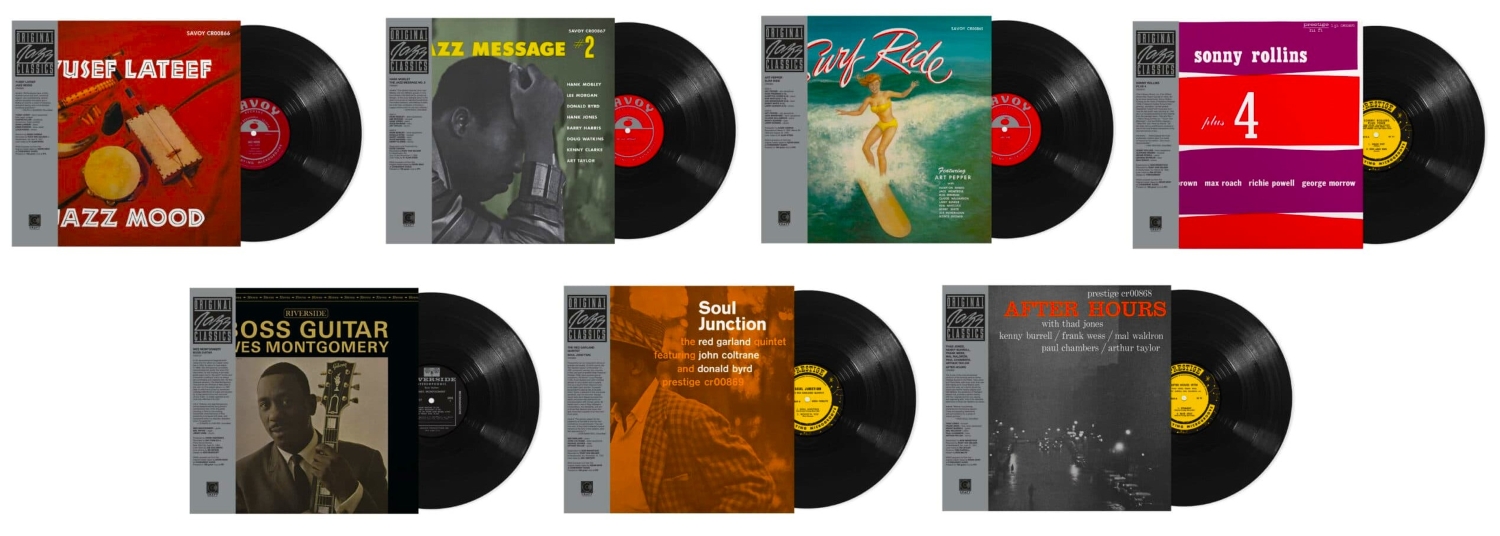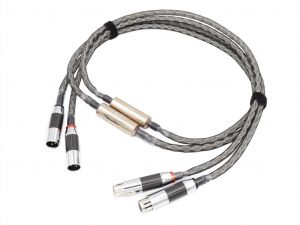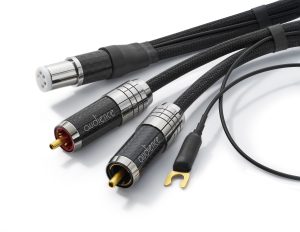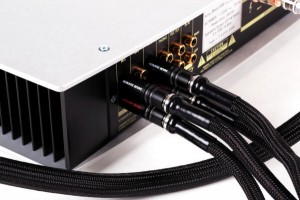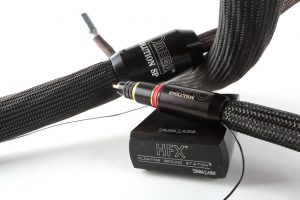When we left off (HERE), I had just contacted Rob Fritz at Audio Art Cable about possibly getting set up with a loom of cables for both my digital and analog room systems. While I didn't press Rob to go the "full loom" route, he did agree to send me a full suite of interconnect and speaker cables. Starting with the interconnects: Copper Cryo OCC balanced cables for connection of my DACs to my PS Audio preamplifier, along with single-ended Copper Cryo OCC cables (they also use Viborg locking connectors) for connection of my two turntables to my PS Audio Stellar phono preamplifier and PrimaLuna tube integrated amplifier. Rob also sent two sets of speaker cables, one for each of my two systems: Statement e SC Cryo speaker cables terminated with Furutech connectors for the digital system, and Copper Cryo speaker cables that are terminated with Viborg connectors for the analog system. Audio Art's product line doesn't currently include USB or i2s digital cables; no worries, I'm perfectly stoked with the performance provided to my system by my current USB and i2s cables from Oyaide and Sommer.
Audio Art Cable Interconnects and Speaker Cables are Marvels of Technology!
Audio Art manufactures and assembles their cables to exacting standards, utilizing cutting edge materials and impressive levels of technology throughout the production process. All cables are hand-assembled to order in their custom shop in San Diego by Audio Art's own Phil Martinez. Assembled interconnect cables are encased in handsome and durable Techflex sleeves, and are expertly terminated using high-performance Mundorf Supreme Silver/Gold Solder. Post assembly, all conductive surfaces are treated with Kontak ECO3x contact cleaner, and prior to shipment, all Audio Art Cables are cryogenically treated using a proprietary cryo process. While I specifically chose gold-plated connectors, rhodium plated connectors are also available for an uptick in price on many cable models. The customer can also have their cables conditioned using an audiodharma Cable Cooker—I highly recommend choosing that last option!
Cryogenics goes all the way to the molecular level to improve signal flow—and everything else that engenders—between your audio components. Unimpeded signal flow is definitely at the heart of great audio performance! Audio Art Cable employs a patented, deep cryogenic process designed specifically for audio cables and connectors to enhance the cable's performance. I pulled some information explaining and promoting the benefits of cryogenic treatment from Audio Art's website: "During the cooling or solidification phase of the wire manufacturing process, the individual molecules making up the metals are "trapped" in a random, haphazard pattern. This arbitrary placement causes obstacles for electrons to flow unimpeded when encountered. These obstructions can cause noise, slow down electron flow and consequently will negatively impact the quality of the music being played. At the very cold temperatures (below -300°F) achieved during the cryogenic treatment process, molecules align in a more uniform, compact structure through the removal of the kinetic energy which occurs naturally between the molecules. When the material is returned to ambient temperature, these new uniform molecular patterns are preserved, making for a permanent change. These newly achieved benefits do not deteriorate over time or upon return to operating temperature. Music flows effortlessly through your system [and] into your ears with an absolute minimal degree of alteration. The result is a highly musical interconnect with richly refined tonal characteristics, resolved frequency extremes, improved micro and macro dynamic shadings, holographic spatial cues, and more!" This is my first experience with cryogenically treated cables, and based on this explanation of the process, that alone could easily explain the insanely good sound I'm hearing from Audio Art Cables.
At the core of Audio Art's new Copper Cryo OCC interconnect cables is their new, ultra-high purity (UHP), dual shielded OHNO Continuous Cast copper (OCC) technology. Copper Cryo OCC maintains a highly resolving character, but also offers the natural and organic warmth of pure copper that appeals to many audiophiles. The cable design utilizes multiple stranded, OCC copper conductors insulated with an ultra-low loss foamed Polyethylene dielectric in a low capacitance design. 100% aluminum mylar shielding provides superior immunity to noise. XLR balanced interconnects are terminated with premium Viborg XM/XF-202(G) XLR connectors that are made from pure copper and are triple plated with gold. Single-ended RCA interconnects are terminated with premium Viborg VR-109(G) RCA plugs that are made from pure copper that's gold plated for superior conductivity. The Viborg connectors are thermochemically inert, and their heavy plating provides superior resistance to corrosion and oxidation.
The Statement e SC Cryo speaker cables employ "7 Nines" single crystal, OHNO Continuous Cast wire that's 99.99998% pure. The conductors are organized in a matrix array of multi-stranded Ultra High Purity OHNO Continuous Cast (UHP-OCC) Mono Crystal copper wire, along with silver plated UHP-OCC wires. This cable geometry features 8 conductors, StarQuad architecture, and a center PVC ventral cord; the multiple strands are of differing diameters, and everything is encased in a foamed polyethylene dielectric. Statement e SC Cryo cables are bi-wirable; four 17 AWG conductors per channel can be configured into an aggregate 11-gauge single wire speaker cable, or they can be configured into a 14-gauge option for bi-wire. The assembled cable is encased in three layers of PVC CL3, a vibrational absorbing fabric wrap, and an exterior PVC jacket. Available termination includes bananas or spade lugs, including a choice (or mix) of Furutech's Ethereal FT-212(G) locking banana connectors or their Ethereal FT-211(G) spade lugs. Both of which feature one piece, 24K gold-plated copper conductors. Pure copper conductors are injected with high-tech polyoxymethylene resin using Furutech's piezo ceramic damping material, which provides complete electromechanical immunity. Furutech's Nano Liquid Infusion is used in the termination process.
Audio Art's new Copper Cryo speaker cables use Ultra High Purity Oxygen-Free Copper (UHP OFC) wire. The Copper Cryo UHP OFC cables are also bi-wirable; four 17 AWG conductors per channel can be configured into an aggregate 11-gauge single wire speaker cable, or they can be configured into a 14-gauge option for bi-wire. The matrix of conductors is insulated with an ultra-low loss foamed Polyethylene dielectric in a low capacitance design. The conductors are surrounded by vibrational absorbing fill, and are encased in a durable midnight blue PVC jacket. As with the other cables in the Copper Cryo line, Viborg connectors are employed and are available in a choice (or mix) of Viborg VB-401(G) bananas or Viborg VS-702(G) dual-stepped spade lugs. Both choices feature pure OFC copper that's triple plated with gold, and Furutech's Nano Liquid Infusion is also used to terminate the Copper Cryo cable line.
The Audio Art Cables arrived several weeks after my conversations with Rob Fritz; the quantity of cables as well as the additional conditioning on the audiodharma Cable Cooker contributed to extended prep times. No worries, and upon arrival, my impression of the new interconnects and speaker cables were just as positive as when I received the first batch—these are seriously beautiful and substantial cables!
Systems and Set up
Click on my name in the header above, and you'll see full listings for all the equipment currently in use in my two systems. For this review, both systems were used; my digital system features the network-connected Euphony Audio dual-box, Summus/Endpoint streamer/audio player/library organizer. Dual USB signals are then fed to twin DACs in the system, but for the vast majority of my listening evaluations here, the Euphony Endpoint and Gustard X26 Pro DAC were connected by a Sommer i2s cable (it's a superior digital connection!). The Gustard X26 Pro is also connected to the Gustard C-18 oven controlled clock unit with the aforementioned Audio Art Cable Statement BNC digital cable. There's also a Topping E70 Velvet DAC, although the Gustard equipment has been doing all of the heavy lifting recently. My PS Audio Stellar balanced preamplifier provides a balanced connection to the Naiu Labs Ella stereo amplifier, which feeds a pair of Magneplanar LRS+ loudspeakers and a REL T1 subwoofer.
The complement of Audio Art Cables used in the digital system include the currently in use .5-meter Statement BNC digital cable along with the game-changing 2.5-meter Copper Cryo OCC XLR balanced cable that connects the preamplifier outputs to the amp. Another 1-meter Copper Cryo OCC XLR balanced cable connects the DAC to the preamplifier inputs. Finally, an 8-foot pair of Statement e SC Cryo speaker cables connects the amplifier to the loudspeakers. The digital system is fully-balanced from top-to-bottom.
My analog system is built around a pair of turntables, with a ProJect Classic EVO that's fitted with an Ortofon Quintet Bronze MC cartridge getting the majority of playback action. It's joined by an almost vintage Rega Planar 2 table that's been heavily modified and is fitted with an Ortofon 2M Mono cartridge; that setup assists with the substantial number of classic mono jazz LPs I've been recently reviewing. Those twin tables feed into a new PS Audio Stellar phono preamplifier; it has inputs for two turntables, and has lifted my system performance inestimably. The phono pre feeds into my PrimaLuna EVO 300 tube integrated amplifier, which in turn feeds a pair of new production KLH Model Five loudspeakers. It's a system with a classically vintage aesthetic but a very modern tube-based sound.
The Audio Art Cables used in the analog system include two pairs of 1.5-meter Copper Cryo OCC single-ended cables; one pair connects the ProJect turntable to the phono preamplifier's MC input, and the second 1.5-meter pair connects the phono preamplifier's output to the integrated amp. The captive cables of the Rega turntable connect it to the phono preamp's MM input; hey, it is what it is! An 8-foot pair of Copper Cryo UHP OFC speaker cables connects the amplifier to the loudspeakers to complete the analog setup.
With regard to the Copper Cryo OCC interconnects: since there was no available information online, I wasn't aware that their Viborg RCA plugs were of the locking variety. When I opened the package from Audio Art Cable, I realized that the RCA plugs were very loose at each end. That troubled me, and I twisted them all tightly before attempting to attach them to the turntable, phono preamp, and integrated amplifier. Of course, attaching them was now impossible; with the RCA plugs completely tightened, they wouldn't even think about fitting to the input and output posts. I was temporarily baffled, but the light bulb quickly went off and I realized that the Viborg RCA plugs were locking connectors, which is actually a very elegant connection solution. As Homer Simpson would say, "D'oh!!"
Listening Tests
Even though the "evolving with regard to exotic cables" part of my brain still wasn't firing on all cylinders, I forged on, deciding that the best route was to methodically sub in the new Audio Art Cables for A/B comparisons with the status quo cables. As I began adding in new cables, keep in mind that the Statement BNC digital and original Copper Cryo OCC cables were already in place. First step, replacing the current XLR cable feeding the signal from the Gustard X26 Pro DAC to the preamplifier with the additional Copper Cryo OCC XLR cable. At this point, the signal path from clock to DAC to preamplifier to amplifier was completed, and I played a track from Native DSD Music's new DSD 512 transfer of Patricia Barber's Modern Cool that I've become greatly enamored with in recent weeks, "Company." Which is a quartet setting where Barber sings without providing any of the superb work at the piano she's noted for. Mark Walker's thunderous, propulsive drumbeat opens the track; Patricia Barber's smoky/sweet alto voice speaks/sings the vocal entry over the drums, as Michael Arnopol's subterranean bass underpins the proceedings. As the song continues, Dave Douglas' trumpet punctuates the proceedings; this is maybe the most dynamic jazz recording on my entire music server, especially in its new DSD 512 guise. I've had these files on my digital server for a month now, and have been listening to the digital system with the full complement of Audio Art Cables for much of that time, so I'm totally in touch with how this all sounds on the system.
Adding the 1-meter Copper Cryo OCC XLR to the system opened its sound significantly, almost as substantially as when the 2.5-meter Copper Cryo OCC was inserted between the preamp and amp a few weeks prior. The music benefited from improved dynamics, more tightly defined bass, and gained an extra measure of clarity; and abundance of fine detail was omnipresent. Replacing the Copper Cryo OCC with the status quo cable made the same track less dynamic, less dimensional, less colorful, and slightly more congested; replacing it with the Audio Art cable ameliorated the situation. An all-Audio Art Cable path from clock to DAC to preamp to amp proved to be the correct configuration, allowing my digital system components to exhibit the kind of synergy they'd never previously shown.
The final step in the digital system transformation was to insert the Statement e SC Cryo speaker cables into the path. I had the new cables constructed with spade lugs on the amplifier end and banana plugs on the loudspeaker end, mainly to accommodate the strange connection needs of my Magneplanar LRS+ loudspeakers. Which only have inputs for bananas, and oddly enough, not all bananas seem to fit them perfectly; they always seem to need some tweaking with a hex key. Not the case with the Statement e SC Cryo cables' Furutech locking banana connectors, which easily inserted into the receptacles and were solidly tightened with a twist of the connector's barrel. Nice! So let's cue up Patricia Barber's "Company" again: with the Statement e SC Cryo speaker cables in place, the small Maggies reproduced the music with the kind of muscularity and control I'd never heard from them before. This music rocked the Magneplanars with the kind of authority I never dreamed they were capable of—and this is running them full-range, with no crossover employed between them and the REL sub. In a word, astonishing!
Magneplanar's new panel design, which is quasi-ribbon on all drivers, can be a somewhat difficult load to drive, and requires an amplifier with enough current and watts to be up to the task—the Naiu Ella has no problems there. But I noticed two things very quickly with the Statement e SC Cryo cables in place: they offered better panel control with the Maggies, which can suffer from a bit of excessive flexure with demanding music; that never happened with the new cables in place. Ever. I was stunned by this, but was almost more surprised by the sudden warmth exhibited by the LRS+, which can run a tad steely in the treble range. That touch of warmth contributed to an improved level of musicality, which was definitely welcome! Reverting to the previous speaker cables revealed slight panel vibrations when I pushed the music closer to reference levels; there was also a slight harshness in the treble. Reinserting the Statement e SC Cryo cables eliminated the harshness and vibrations, and I found that I could increase the volume level without causing the Magneplanars to misbehave at all. So far, the Statement e SC Cryo loudspeaker cable is the only one I've tested that's more expensive than the equivalent status quo cable, but with these kind of performance gains, it's obviously worth the upgrade cost!
Moving along to the analog system, where cable placement is paramount to avoid interactions with MC cartridge signals and AC power cables. Which actually ended up being a non-issue with the single-ended runs of Copper Cryo OCC cable between the turntables and the Stellar phono preamp and PrimaLuna tube integrated amp. I've had the PS Audio Stellar for just over a month now, and have finally gotten its custom settings dialed-in to my liking: I'm absolutely loving listening to LPs through this unit! The music I chose for this evaluation is from Jennifer Warnes' classic album Famous Blue Raincoat, which has just been reissued as a 45 rpm 1STEP title by Impex Records. The LPs are pressed on Neotech's VR900BK1 Supreme Vinyl compound, and the music here sounds better than ever, in any format I've ever heard! I chose the title track, "Famous Blue Raincoat" for evaluation (HERE); I've been listening to this LP set for about a month now with the full complement of Audio Art Cables in the analog system, and have a great sense for how it sounds.
Since the PS Audio unit is still relatively new, I chose not to do a between-units cable comparison, I simply switched between both sets of the status quo cables and the Copper Cryo OCCs at the same time. That alone was incredibly revealing; whereas I'd felt the sound of the analog room was pretty good as it was, with the Audio Art Cables in the mix, there was a noted improvement in sound quality. Jennifer Warnes' new Impex LP played with quieter backgrounds, and the LPs are already crazy quiet—probably due in no small measure to the improved shielding offered by the Copper Cryo OCCs. There was a noted improvement in the stereo image, which seemed more rock solid; Jennifer's vocal was more perfectly centered, and possessed a greater degree of realism, and when that tenor sax comes in, like wow! And the music floated between the KLH loudspeakers, not seeming to emanate directly from them. There was a greater degree of classic tube analog warmth present in the sound; switching back to the original cables robbed the music of much of its vitality, and imparted a bit of harshness to the overall presentation. Details were blurred and much less distinct. Returning to the Copper Cryo OCCs restored the sound to the impressive level of musicality I've grown to love; these are exceptional interconnects, and share much of the DNA of Audio Art's Statement series.
To complete the analog system setup, I installed the new Copper Cryo UHP OFC speaker cables between the PrimaLuna EVO 300 integrated and the KLH Model Five loudspeakers. The KLH Model Fives can sound a touch bright with the wrong equipment; they have a presence knob on the back that will allow you to adjust the treble down in 1.5 dB steps. But I don't feel like their sound with any setting other than the default sounds nearly as transparent, so that makes the cable choice really important with these otherwise excellent new production loudspeakers. The status quo speaker cables tend to impart a slightly etched top-end to the Model Fives, despite delivering an extremely musical signal from a really great sounding EL-34-based tube amplifier.
As I mentioned earlier, I've been listening to all the Audio Art Cables for a couple of months, but only in the present system setup for a month since the addition of the Stellar phono preamp. But I really love the sound of the Copper Cryo UHP OFC cables in the analog system! You get that great tube sound unvarnished, without a trace of harshness; they're the perfect conduit from the EVO 300 to the KLH Model Fives. The Model Fives are an easy load to drive, and place no demands on the PrimaLuna integrated; a speaker cable that simply vanishes during playback is perfect for them. The Copper Cryo speaker cables are definitely the one; replacing them with the status quo cables returns to the harshness that had me constantly fiddling with the presence knob on the Model Fives in the first place. The new Jennifer Warnes' 1STEP reissue of Famous Blue Raincoat is an exceptionally good sounding release, but with the old cables in the system, it's much less so. Replace them with the Audio Art Copper Cryo speaker cables, and it's back on my best of the year list. At their low price point, the Copper Cryo speaker cables are an absolute bargain!
Coda
This has been a journey of serious discovery on a topic I honestly didn't know I was mostly oblivious to. Where you don't realize you're not hearing everything—until you finally hear it. As I stated at the outset, I'd always pretty much been of the opinion that well-constructed cables were enough; it's obviously not. After having experienced Audio Art Cable designs that employ exotic materials and precious metal coatings in their terminations, I've seen the light. On top of all that, they're exceptionally well made, as well! And I also can't help but believe that the benefits of cryogenic treatment of cables are real, and of much greater value than one might be inclined to believe at face value. With the Audio Art Cables now in place in my system, I feel as though I'm actually hearing my music for the very first time with the kind of power, authority, clarity, and musicality I expect it to have. I want to thank Rob Fritz for the brilliance of his designs, for his patience, his consideration and willingness to accommodate my needs, and especially for not being one of those "Yippee-Ki-Yay Cowboy!" guys I seemed to encounter at every corner at the outset of this adventure.
Pros: Everything! Clarity, musicality, and absolute gobs of detail, along with excellent execution in each cable's construction; Audio Art Cables are built to last. Both the analog and digital systems performed at peak levels I'd never previously dreamed possible.
Cons: Audio Art Cable interconnects are relatively stiff; that was only a problem for me with the shorter run of balanced interconnect, which gave me a certain level of consternation in getting both ends properly oriented and into their respective sockets. It was only an issue for about five minutes, so no real worries.
Are Audio Art Cables a good value for the money? Unhesitatingly, unflinchingly, yes, absolutely! When you do the math and realize that the roughly $4500 in cables Rob Fritz provided me with amounts to approximately 7 percent of my total system value, that puts their cost more into perspective. And especially when you take into consideration the improved musicality and massive improvements in system synergy; only now do I feel that most of my components are able to convey the full measure of audio goodness that's been hiding inside them, muddled by inferior cables for years. Audio Art Cables are the real deal; hats off to both Rob Fritz for his brilliant designs, and to Phil Martinez for his technical excellence. Very highly recommended!
Copper Cryo OCC Balanced Interconnect, 2-meter Pair
Retail: $660
Copper Cryo OCC Balanced Interconnect, 1-meter Pair
Retail: $600
Copper Cryo OCC Single-ended Interconnect, 1.5-meter Pair
Retail: $530
Statement e SC Cryo Speaker Cables, 8-foot Pair
Retail: $1640
Copper Cryo UHP OFC Speaker Cables, 8-foot Pair
Retail: $600
Audio Art Cable
All images supplied by Audio Art Cable and the author
*All shown prices include audiodharma cable conditioning






